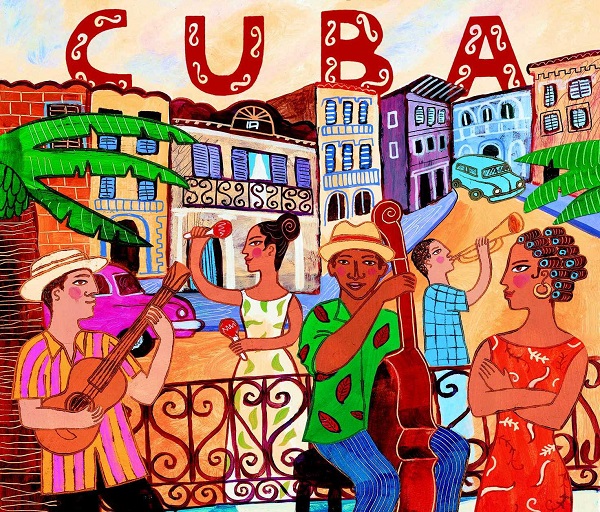3.2 Musical instruments that the Spanish introduced in Cuba.

In Cuba, songs originated that were accompanied by plucked string instruments such as the guitar and the harp. These plucked string instruments are characterized by producing sound by plucking the strings. This plucking is achieved using either the fingers or a pick. Each string of the instruments in this group produces a unique sound, although instruments with fewer strings can produce more than one sound using the same string.
The guitar is a musical instrument belonging to the family of plucked strings. Its specific name is classical guitar or Spanish guitar. It consists of a wooden body, a neck on which the fingerboard, also known as the fretboard, is placed (generally with a sound hole in the center of the soundboard), and six strings. The frets are inlaid on the fingerboard, which give rise to the different notes produced by the guitar. It is an instrument used in various musical genres such as country music, blues, rock, and flamenco, and is quite frequently used by singer-songwriters.
The harp’s fundamental characteristic is its tone, which is profoundly delicate. It is triangular in shape and has an internal wooden structure, its strings extend diagonally toward the soundboard. The tuning pegs are located on the console located at the top of the instrument. The column separates the console and the table, thus preventing them from being joined together by the tension of the strings. On the lower part, known as the base, are seven pedals that allow the strings to be varied in length. Each of these pedals has three different positions, which produce three different sounds. Playing it is quite simple: simply press the pedal and the string shortens. This process achieves a wide variety of sounds and sound effects.
Castanets are two hollow-shaped pieces of esparto wood pierced with an ornamental, mostly red, string that is placed around the thumb. Their parts consist of the shell, which is the main part since it is where the resonances occur; the lips where they strike; the lips that border the shell, which when struck oppositely generate noise; the point, which is the place where the radius of the castanet reaches its lower end on the vertical axis; the ear or besuña where the tendons or ropes that join both sides of the castanet are tied; and finally the heart or concave central hymen, which is the inner face of the castanet. The pitches of the pairs are different: the lowest is called macho and the highest, hembra. It is the national instrument of Spain.








